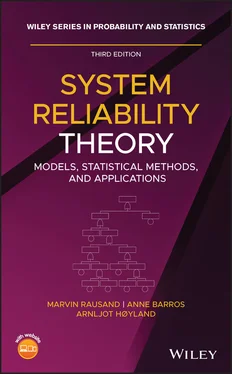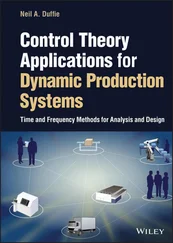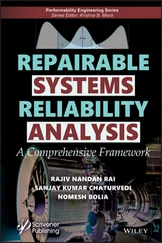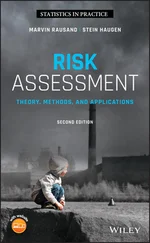The root cause analysis is reactive, starting with (i) a failure that has happened, or (ii) a potential failure that has been identified. The root cause analysis should continue until organizational factors have been identified, or until data are exhausted. Root cause analysis may be used to investigate a wide range of undesired events, not only failures and faults but also our description is delimited to failure/fault analysis.
The main steps of a root cause (failure) analysis are:
1 Clearly define the failure or fault. Explain clearly what went wrong.
2 Gather data/evidence. The evidence should provide answers to the following questions:When did the failure occur?Where did it occur?What conditions were present prior to its occurrence?What controls or barriers could have prevented its occurrence but did not?What are the potential causes? (Make a preliminary list of likely causes).Which actions can prevent recurrence?
3 Ask why and identify the true root cause associated with the defined failure/fault.
4 Check the logic and eliminate items that are not causes.
5 Identify corrective action(s) that will prevent recurrence of the failure/fault – and that address both proximate and root causes.
6 Implement the corrective action(s).
7 Observe the corrective actions to ensure effectiveness.
8 If necessary, reexamine the root cause analysis.
The root cause analysis is done by a team using idea generation techniques, such as brainstorming, and is often started by a cause and effect analysis link: (see Section 3.7.1). To identify root causes, it is usually recommended to ask “why?” at least five times for each main cause identified. The five whys are illustrated in Figure 3.14.
The root causes must be thoroughly understood before corrective actions are proposed. By correcting root causes, it is hoped that the likelihood of failure recurrence is minimized.

Figure 3.14Repeatedly asking why?
Example 3.15 (Car will not start)
Reconsider the car that will not start in Example 3.14. The following sequence of five questions and answers may illustrate the analysis process.
1 Why will not the car start?Cause: The engine will not turn over.
2 Why will the engine not turn over?Cause: The battery is dead.
3 Why is the battery dead?Cause: The alternator is not functioning.
4 Why is the alternator not functioning?Cause: The belt is broken.
5 Why is the alternator belt broken?Cause: The belt was not replaced according to the manufacturer's maintenance schedule.
This example is strongly influenced by the presentation “Corrective action and root cause analysis” by David S. Korcal (found on the Internet).
Careful studies of failures that occur should add to our “lessons learned,” and we therefore end this chapter optimistically by quoting Henry Ford (1863–1947):
Failure is the opportunity to begin again more intelligently.
1 3.1 Consider the exterior door of a family house. The door is locked/unlocked by using a standard key.List all relevant functions of the door (including lock).List all relevant failure modes of the door.Classify the failure modes by using the classification system outlined in this chapter.Do you consider it relevant to include misuse failures? If “yes,” provide examples.
2 3.2 Consider a filter coffee maker/brewer that you are familiar with.List all potential failure modes of the coffee brewer.Identify potential causes of each failure mode.Identify potential effects of each failure mode.
3 3.3 Identify and describe possible failure modes of a (domestic) refrigerator.
4 3.4 Assume that your mobile phone is “dead.” Illustrate the possible causes of this fault by a cause and effect diagram.
5 3.5 Consider a smoke detector used in a private home and list possible causes of systematic faults of this detector.
6 3.6 Explain the differences between the terms failure and fault. Illustrate you explanation by practical examples.
7 3.7 Consider a domestic washing machine.Identify as many causes of potential failures as possible.Define categories of failure causes.Use these categories to classify the identified failure causes.
8 3.8 Suggest a technical system that can be divided into several levels of indenture. If you cannot propose anything better, you may use a family car. Assume that a specific component failure mode occurs in the system and exemplify the relationships that are illustrated in Figure 3.6.
9 3.9 Reconsider the coffee maker in Problem 3.2. When you press the on/off switch, no coffee is supplied.Analyze the “failure” by using a cause and effect diagram.Analyze the same “failure” by a root cause analysis.
1 Blache, K.M. and Shrivastava, A.B. (1994). Defining failure of manufacturing machinery and equipment. Proceedings Annual Reliability and Maintainability Symposium, pp. 69–75.
2 EU‐2006/42/EC (2006). Council Directive 2006/42/EC of 17 May 2006 on machinery. Official Journal of the European Union, L 157/24 (2006). Brussels.
3 IEC 61508 (2010). Functional safety of electrical/electronic/programmable electronic safety‐related systems. Parts 1‐7, International standard. Geneva: International Electrotechnical Commission.
4 Ishikawa, K. (1986). Guide to Quality Control. White Plains, NY: Asian Productivity Organization – Quality Resources.
5 NASA (2002). Fault Tree Handbook with Aerospace Applications, Handbook. Washington, DC: U.S. National Aeronautics and Space Administration.
6 Pearl, J. (2009). Causality: Models, Reasoning, and Inference, 2e. Cambridge: Cambridge University Press.
Конец ознакомительного фрагмента.
Текст предоставлен ООО «ЛитРес».
Прочитайте эту книгу целиком, на ЛитРес.
Безопасно оплатить книгу можно банковской картой Visa, MasterCard, Maestro, со счета мобильного телефона, с платежного терминала, в салоне МТС или Связной, через PayPal, WebMoney, Яндекс.Деньги, QIWI Кошелек, бонусными картами или другим удобным Вам способом.













